Jet skiing in the summertime is a great way to have fun with family and friends. In order to have a great time, you will need to know the laws for riding a jet ski according to the state you reside in. Rules and Regulations can vary from state to state and it is a need-to-know in order to be able to enjoy your time on the water safely.
In the state of Texas, you cannot operate a PWC or vessel if the powerboat has more than 15 horsepower, or if it a windblown vessel that is over 14 feet in length. If you are younger than 13 years of age you can operate PWC if you are supervised by someone 18 years of age or older.
It is important to be aware of the following regulations and laws for riding a jet ski on the water within the state of Texas. By doing so you are responsibly following the law and that will guarantee you have an adventurous and stress-free time on your jet ski with family and friends.
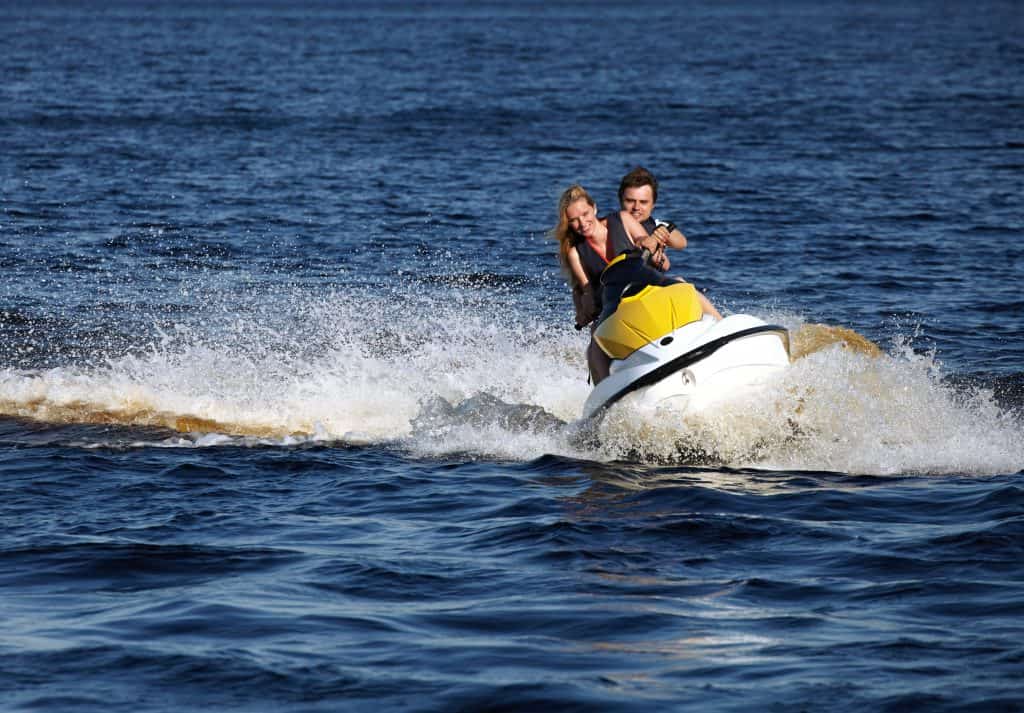
Registering Your PWC or Vessel
Texas Registration Fees
| VESSEL REGISTRATION | |
| Less than 16 feet in length (Class A) | $32.00 |
| 16 feet but less than 26 feet in length (Class 1) | $53.00 |
| 26 feet but less than 40 feet in length (Class 2) | $110.00 |
| 40 feet or more in length (Class 3) | $150.00 |
| Livery Boat less than 16 feet in length (Class A) | $32.00 |
Numbers and Stickers
Once you receive your registration number and the validation stickers you must display these items in the following ways:
- Each number has to be painted, applied onto your vessel as a decal, or place to be shown on both sides of the bow.
- The numbers must be read from left to right on both sides.
- Each number must be in block numbers and three-inches high.
- The color of your numbers must also be in contrast with the background of your vessel.
- The letters have to be separated from the numbers shown on the bow of your vessel.
Hull Identification Number
A Hull Identification Number (HIN) is a 12-digit number that is assigned by the manufacturer to vessels built after 1972. They help be able to determine the difference between multiple vessels.
In case your vessel is stolen you should write down your HIN number and put it somewhere safe.
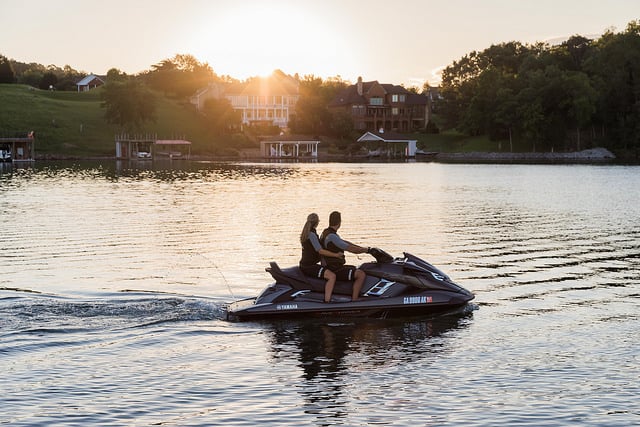
The Basics
Negligent and Reckless Operation of a Vessel
Recklessly operating and being negligent of the rules for operating a vessel is illegal in Texas. The following are examples of negligent and reckless operation:
- When you encircle people that are participating in water activities. Unless you are retrieving someone who is downed in the water. Do not operate a PWC around:
- Any person swimming
- any other PWC or vessel
- anyone on a PWC or vessel that is fishing, water skiing, or engaging in a water activity
You should not ride on the bow, deck or gunwale of a vessel. Riding on anything that is not equipped with fixed seating can lead to the potential of falling overboard. Do not allow your passengers or yourself to sit on the seat backs, transom, gunwale, or seats on a raised deck or bow.
Failing to go at a reasonably speed and even going faster than the speed recommended, especially during vessel traffic, poor weather conditions and closeness to shore can result in injuries. Examples of this are:
- Going at a speed that can be harmful to your vessel.
- Going faster than the speed limit posted near the body of water you are operating on.
- Operating at a greater speed than “slow, no wake speed” that is posed in a “no wake” zone.
- Operating your vessel at extreme speeds in the close vicinity of another vessel, PWCs or dangerous waters.
Causing damage to someone’s property or to someone in a “no wake” zone. When in a “no wake” zone, you will need to operate your vessel slowly. You will need to reduce your speed near:
- a swimming area
- close to a shoreline
- another vessel where people are fishing, water-skiing, diving, or an anchored vessel
Being at a restricted area that was clearly marked by buoys or in some other way.
If you are operating your vessel faster than 5 mph while operating within 100 feet of the shore, dock, pier, raft, float, or an anchored or moored vessel you are operating your vessel improperly and putting others around you at risk.
Weaving through traffic, swerving last minute to avoid a head-on collision with another vessel, or overloading your vessel beyond the capacity it states on the plate is also another example of recklessly operating a PWC.
Operating in unsafe conditions is another way to operate a PWC recklessly. Not having enough personal flotation devices, fire extinguishers, backfire flame arrestors, ventilation systems, or navigational lights are putting yourself and others abroad your vessel at risk.
You also put yourself and others in danger when you overload or overpower your boat, or when you are operating it while under the influence of drugs or alcohol.
Alcohol and Drugs
In the state of Texas, you are considered to be under the influence if your blood alcohol content is 0.08% or greater.
The following penalties are enforced if convicted of boating under the influence.
- On your first conviction, you can be fined up to $2,000 and you might even receive jail time for up to 180 days.
- On your second conviction, you can be fined up to $4,000 and you can even go to jail for up to one year.
- If you are on your third conviction you can receive a fine up to $10,000 and receive time in jail between 2 to 10 years.
Requirements to PWCs Specifically
- Each person riding on a PWC must wear a U.S. Coast Guard approved personal flotation device.
- It is illegal to harass, chase, or disturb the wildlife with your PWC or vessels.
- You must only carry the number of people that are rated on the PWC.
- You cannot operate a PWC within 500 ft of a designated swimming area.
- Reckless operation of a PWC is not permitted. Examples of reckless operation are:
- Jumping a wake too close to other vessels
- Last minute avoidance of collision
- Weaving careless through traffic
- Carrying more people than recommended on your PWC
- If you maneuver your PWC in a way that it can cause unreasonable harm to you or your passengers
- It is illegal to operate a personal watercraft vehicle between the hours of sunset and sunrise especially when your vision is a bit restricted.
- You cannot remove any backfire flame arrestor or ventilator if it is installed by your manufacturer.
- You must have a whistle or horn on board your PWC that is U.S. Coast Guard approved.
- The safety ignition switch must be fully functional and have a lanyard attached to it to ensure it does not get lost or misplaced.
Towing a Person on a Vessel Legally
Anyone operating a vessel or PWC that happens to be towing someone behind them must adhere to the following rules and regulations created to keep both the operator and passenger as well as the person being towed safely.
- Anyone being towed behind a PWC must wear a personal flotation device that is approved by the U.S. Coast Guard.
- Inflatable personal flotation devices are not approved by the U.S. Coast Guard and cannot be used while being towed behind a PWC.
- It is illegal for operators of vessels or PWCs to tow skiers, ski board, or any other devices between the hours of sunset and sunrise.
- Water-skis and other devices similar to that cannot be used in such a way that it may cause harm to the person being towed or anyone else around them.
- Every PWC or vessel that is towing someone must have a person on board besides the operator. This is simply so the other person can observe the person being towed and keep them safe.
- An operator must use a ski flag in the following instances:
- When a skier is down in the water
- Someone preparing to ski on the water
- A ski rope is extended from the PWC
- There is a ski that is in the water and near a vessel or a PWC
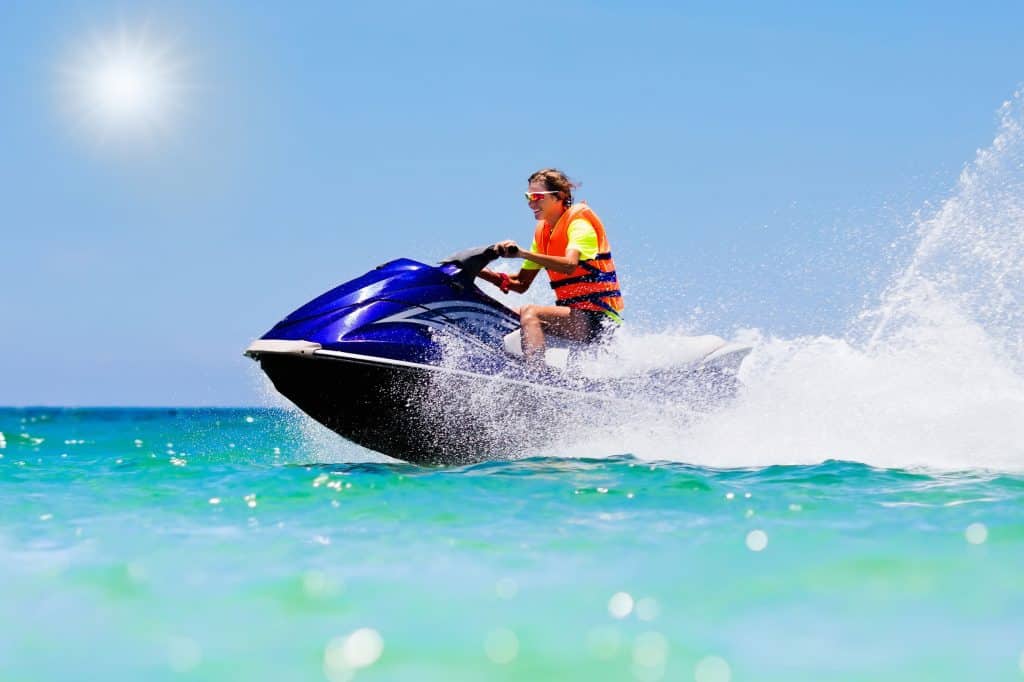
Required Equipment
Personal Flotation Devices
| TYPE 1 | TYPE 2 | TYPE 3 | TYPE 4 | TYPE 5 |
| Offshore Life Jackets | Near-Shore Vests | Flotation Aids | Throwable Devices | Special-Use Devices |
| This vest can turn an unconscious person in the water to face up in the water. It was made for rough waters and for situations where rescue might take a long time | This vest is fit for calmer waters and faster rescues. If you were to wear this whole unconscious it may not be able to turn your face up in the water. | This vest can also be a full-sleeved jacket and it is great for calm waters and fast rescues. This will definitely not turn you face in rough waters. This is generally worn for water sports. | This type of flotation device is a cushion or ring buoys and are typically used to throw at someone in trouble. They are not made to last for long hours in the waters, or non-swimmers, or the unconscious. | This type of flotation device was made for activities like kayaking, water-skiing. These typically look like white water vests, deck suits, and personal flotation device hybrids. |
Personal Flotation Device Requirements
- All personal flotation devices have to be in a serviceable condition and easily accessible.
- Any person that is on board a PWC must wear a personal flotation device that is approved by the U.S. Coast Guard.
- Vessels have to have one of the 5 personal flotation devices, they also must be wearable and a proper size so anyone can wear it
- The inflatable flotation device can be used if the person is 16 years of age or older, and it can be activated by a pull and if it is U.S. Coast Guard approved.
- A Type 4 personal flotation device that is approved by the U.S. Coast Guard must be on board a vessel that is 16 feet or longer and must be easily accessible for emergency use.
Fire Extinguishers
You can classify your fire extinguishers by letter and number symbol. The number helps you decipher the size of the extinguisher, and the letter indicates the type of fire that is extinguished as well.
| TYPE A FIRES | are of combustible solids such as wood |
| TYPE B FIRES | these are flammable liquids like gasoline or oil |
| TYPE C FIRES | this is mainly electrical fires |
All vessels are required to have a Type B fire extinguishers on board in the case of any extreme or dangerous situations occurring. Your fire extinguisher should be placed somewhere easily accessible in the case of a situation where it needs to be used immediately.
Backfire Flame Arrestors
There is a chance that your PWC engine may backfire so it is required for vessels or PWCs to have an approved backfire flame control device that is installed into their carburetor.
Your backfire flame arrestor must be:
- U.S. Coast Guard approved (Or comply with the UL 1111 standards).
- In good and serviceable condition.
- You must also periodically clean the flame arrestor and check for any damage.
Proper Ventilation
The ventilation system is extremely important to have installed in your vessel. Their main purpose is to reduce the chances of an explosion from happening.
- All vessels powered by gasoline are created in a way that it would be able to entrap fumes, have two ventilation ducts with cowls that help remove those fumes.
- If you happen to have a vessel without a powered ventilation system you can open the engine compartment and smell for any gasoline fumes before you start up your engine.
- Before you start the engine or your vessel and after fueling it you should turn it on for at least 4 or 5 minutes if it is equipped with a power ventilation system.
Mufflers
Vessels that are motor-driven must have a muffler or exhaust water manifold installed onto the engine of their vessel as well as a muffling system to minimize the noise their vessel makes.
This is so vessel operators can hear sound signals or voices around them. If not properly muffled they won’t be able to hear over the noise their engine makes.
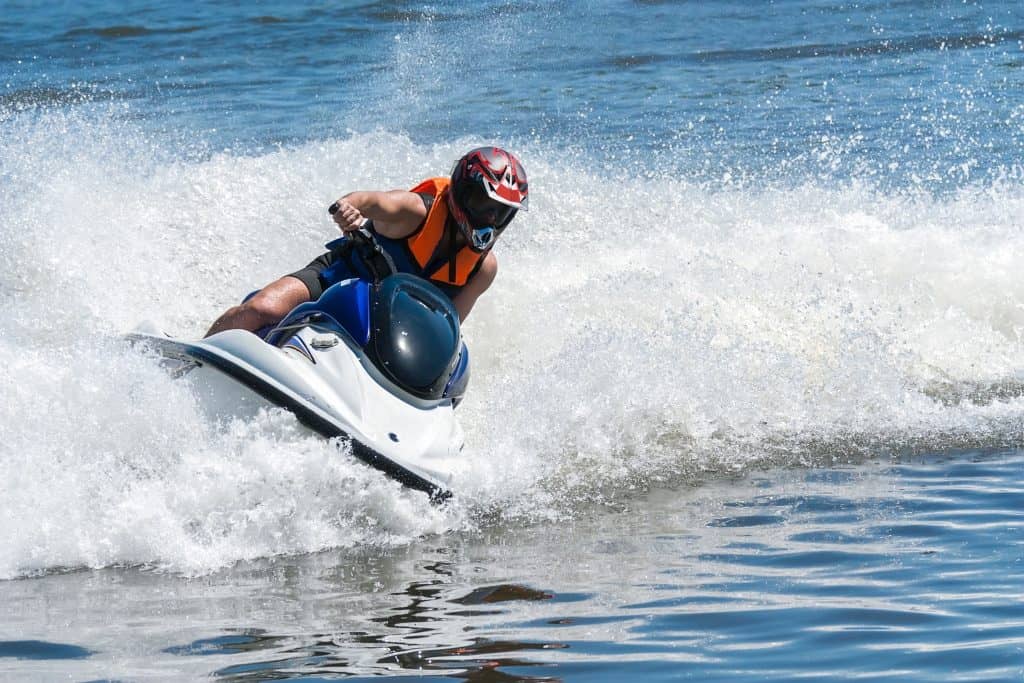
Safety First
Navigational Lights
| Power-Driven Vessels When Underway |
The lights required on a vessel like this one are:
- Red and green sidelights that can be visible from at least 2-miles away, and at least a mile away on a clear, dark night.
- OR
- An all-around white light that can be seen from at least two miles away on a dark, clear night. The lights must be 3.3 inches higher than your sidelights.
| Unpowered Vessels When Not Underway |
Lights required for this vessel are:
- Red and green sidelights that can be seen from 2-miles away. The sunlight must also be visible from 2-miles away.
- OR
- You can bring on board a lantern or flashlight that shines white light.
| All Vessels When Not Underway |
- ALL vessels must show a white light in all directions if they are anchored outside a mooring area between the hours of sunset and sunrise.
Visual Distress Signals
Visual distress signals are used for when a vessel or PWC operators need to signal for help in the eve of an emergency on the water.
Vessels operating on federally controlled waters must be equipped with visual distress signals that are approved by the U.S. Coast Guard. A list of approved VDS’ can be found in the chart below:
| Pyrotechnic Visual Distress Signals | Non-Pyrotechnic Visual Distress Signals | ||
| Orange Smoke | Day Signal | Electric Light | Night Signal |
| Red Meteor | Day and Night Signal | Orange Flag | Day Signal |
| Red Flare | Day and Night Signal |
A minimum of three visual distress signals must be carried on your vessel or PWC.
It is also important to note that it is not advised nor encouraged to use these visual distress signals on the water if you do not need assistance or if you are not in immediate or potential danger.
Pyrotechnic Devices
- While these visual distress signals are extremely effective they can also cause harm if not handled correctly.
- These devices produce a hot flame and residue that can cause burns and even ignite flammable material.
- Parachute flares and other pistol-like devices have many characteristics like a firearm and must be treated with caution (in some states they are considered firearms).
- These types of devices should be stored in a cool, dry and easily remembered and accessible place.
Non-Pyrotechnic Devices
- This type of visual distress signal needs to be readily accessible and in serviceable condition.
- A distress flag is a day signal only. It typically needs to be 3×3 feet with a black square and ball on an orange background.
- The electric light is designed to be used during the night and it must also be able to automatically flash an SOS signal, that way those around you or near you will be able to know you are in need of help.
Arm Signal
- This is a day signal and its action is to summon help if you do not have any other visual distress signals on board your PWC or vessel.
- It is important to keep several visual distress signals in order to avoid a situation where you must resort to an arm signal.
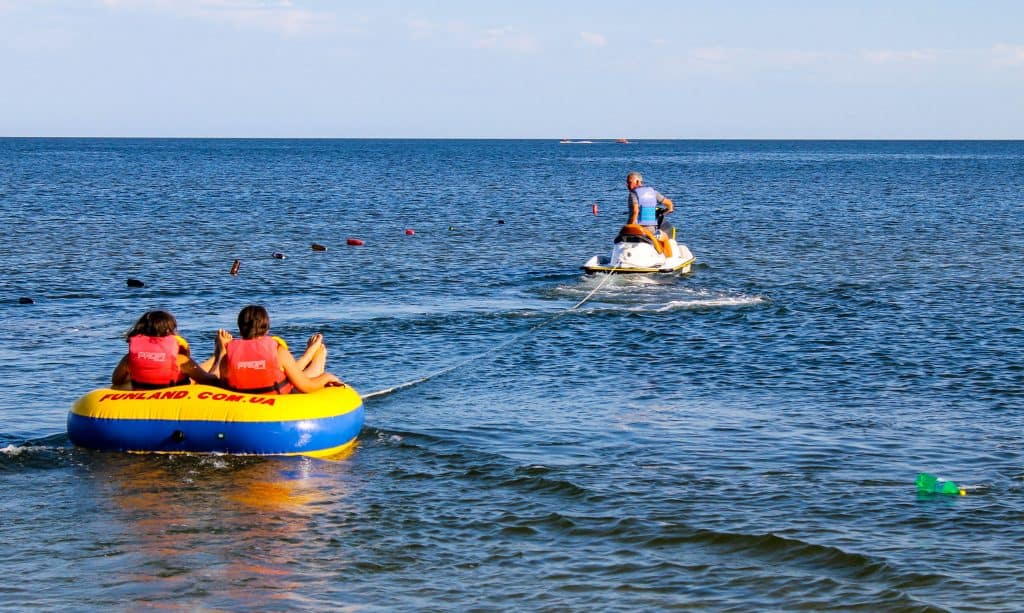
Environmental Measures
Protecting Texas Seagrasses (It’s the Law)
Seagrass is a protective habitat for life in the water and it also makes fishing great. Some of the important things to know about protecting the Texas seagrass is:
- Seagrass helps the environment by creating a safe place for young fish, crustaceans, and shellfish to roam. It also stabilizes the sediment at the bottom of the water.
- The loss of seagrass is caused by coastal development, dredge and fill activities, coastal development, nutrient pollution and uprooting by propellers.
Protecting the Lakes and Waterways from Invasive Plants and Animals
- Non-native aquatic plants
- Common salvinia
- Giant salvinia
- Alligator weed
Can overshadow submersed plants and even lower their oxygen levels, it can put a stop to sport fishing, create a habitat for pesky mosquitoes, resist water flow, and that will result in flooding.
To stop the disruption of the marine life, you are required by the law in the state of Texas to remove any plants that are harmful as well as animals from your vessel. Before you launch or even leave a boat ramp you must do the following:
- You will need to get rid of the plants from your vessel. You will also need to check the water fittings and equipment.
- You should also get rid of it properly, and empty your bait bucket on land and not in the water.
- Make sure to drain your equipment (that is including motor, bilges, live wells, bait buckets, and cooler).
- Rinse the equipment and dry everything for at least five days.
Discharge of Trash, Oil and Hazardous Substances
If your vessel discharges any of the following you can notify the National Response Center by calling:
- 1-800-424-8802
You should also notify the Texas Commission on Environmental Quality by calling the hotline:
- 1-800-832-8224
Trash
When it comes to disposing of your trash, it is illegal to dump plastics or garbage into any federally controlled or even state waters. You have to keep your trash on board, sealed and contained to where it will not fall out.
A garbage disposal placard must be required if you are boating on federal waters and especially if your vessel is 26 feet or longer.
The placard is a durable sign that helps notifies passengers and crews about discharge restrictions.
Oil and Hazardous Substances
It is against the law to discharge any hazardous substance or oil into Texas state waters, and if you fail to follow this law you will be charged $10,000.
You cannot dump any oil into the bilge of your vessel without a proper way of disposing of. You can purchase bilge pads for any fuel spills. The pads are able to remove the spill with its absorbency.
If you must discharge oil waste you can do so at your local reception facility. If you are on a recreational vessel a bucket works just as well.
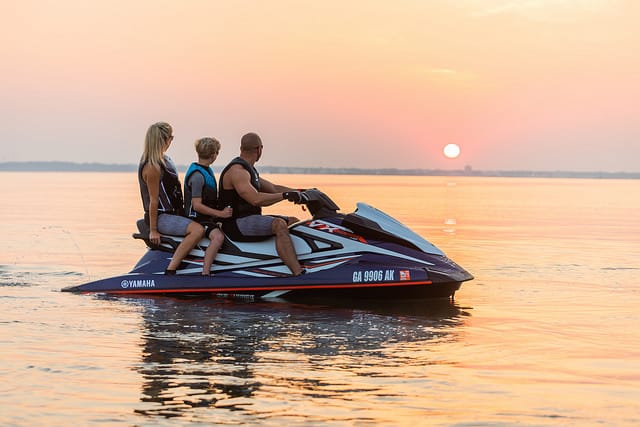
Boating or PWC Accidents…What To Do
If you get involved in a boating accident you must:
- Stop your vessel immediately by the accident
- Assist anyone who may be injured or if they are in danger, unless doing so may put others on your PWC or vessel in danger
- You will need to give, in writing, the name of the person who is injured, the certificate number to anyone injured and the owner of any of the property that was damaged
If you are involved in an accident that resulted in:
- Death
- An injury that will result in treatment beyond first aid
- Property damage that exceeds $2,000 to all vessels and docks that are involved in an accident
If you are involved in the accidents above you will need to submit an accident report.
Enforcement and Penalties
The boating laws of the state of Texas are enforced by the Law Enforcement Division of Texas Parks and Wildlife Department.
- Anyone who fails to follow the laws listed within the Texas Water Safety Act is, in fact, guilty of a code misdemeanor.
- Anyone that is convicted of a misdemeanor can pay a fine that is no less than $25 and no more than $500. You may also be required to complete and pass a boating education course.
